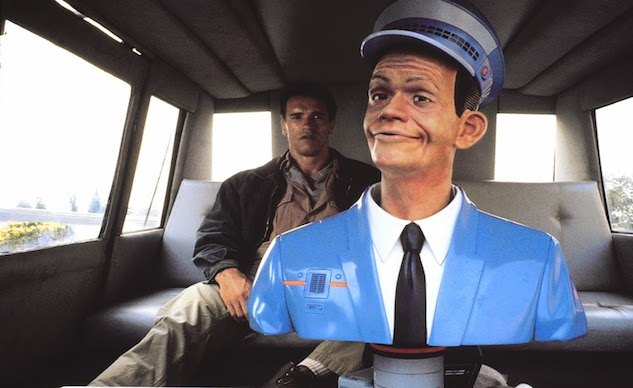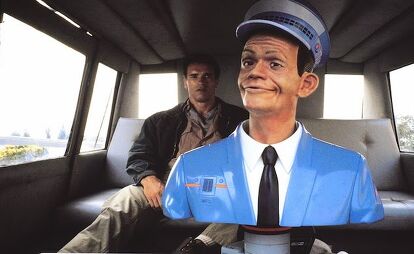Google Self-Driving Car Project Considers Lane Splitting Motorcyclists
The November issue of Google’s Self-Driving Car Project Monthly Report was all about motorcyclists and how Google is tackling the difficult task of designing an autonomous vehicle that’s capable of safely sharing the road with smaller, lighter, faster accelerating and braking motorcycles. Lucky for us, a senior software engineer named Christian is involved with developing Google’s autonomous technology.
In the report below Christian reduces some of the of the anxiety of riding on public roads with driverless vehicles. When taking into consideration the damage-inflicting human factor, motorcyclists may well be safer without humans behind the steering wheel. It’s interesting that their testing also accounts for the legality of lane splitting in California (as well as other parts of the world).
Meet Motobot, Yamaha’s Motorcycle-Riding Robot
When it all goes to hell in a handbasket, and they illegalize any type of human operation of a vehicle on a public road we’ll (hopefully) always have the racetrack.
Google Self-Driving Car Project
Monthly Report November 2016
Motorcyclists risk their lives daily on American roads each year – motorcyclists accounted for 27 times more deaths than drivers in cars in 2014, after adjusting for miles traveled. Human error from other drivers is often to blame, with drivers failing to spot motorcycles before making turns or changing lanes. By removing this human error, our self-driving cars have the potential to make the roads safer for riders and other road users.
While each type of road user has their own quirks, we’ve found motorcycles a particularly unique class. Though they obey the same traffic laws as cars, motorcycles come in very different shapes, sizes and styles of driving. This month senior software engineer Christian, who rides a BMW K1600 GT and is a card-carrying member of the American Motorcyclist Association, explains how he is using his firsthand knowledge to help Google’s self-driving cars and motorcycles share the road safely.
How do you think Google’s self-driving cars help make your ride safer?
Christian: For a motorcyclist, the biggest issue is visibility. I’ve lost count of the number of times that a driver hasn’t seen me coming on my bike, or has made a turn in front of me without first looking. Our self-driving cars don’t get distracted and can see 360 degrees, two football fields away. Humans also have more difficulty seeing smaller things — like bikes — when there is less light. But thanks to our suite of sensors, our cars are just as capable of seeing motorcycles in the pitch dark as in full sunlight.
Our goal in designing a fully self-driving car is that the vehicle is responsible for 100% of the driving. Ultimately we think this is safer than partially autonomous vehicles, which could suddenly hand back control to a person who may not have full awareness of their surroundings, endangering themselves and those around them.
How do your self-driving cars recognize motorcycles and distinguish them from other objects on the road?
We know it is important that our cars can tell the difference between motorcycles and similar objects, such as bicycles. Our software doesn’t need to have seen a particular model of motorcycle in order to recognize them on the road. Through a process called machine learning, our software mimics how humans recognize these road users. For example, you may have never seen a Harley-Davidson Roadster or Ducati 899 Panigale before, but you still know that it is a motorcycle because it looks like other bikes you’ve come across.
Over the last 7 years, we’ve come across thousands upon thousands of motorcycles. Our software learns from these examples in order to build a broader recognition of motorcycles in general, accounting for differences in size, speed, design and countless other factors in behavior.
How does Google’s technology account for the different ways motorcyclists move on the road?
The most obvious is lane splitting, when a motorcycle weaves through other vehicles between different lanes on the road. Recently my home state of California became the first state to formally legalize lane splitting — and it’s very common, particularly during peak hour.
We’ve taught our software to recognize and safely respond to this type of riding. Because we’ve observed many instances of lane splitting, we’re better able to predict how a rider will navigate around us and other cars. When safe, our cars will actually move slightly to the side to give a passing motorcycle more room to maneuver. And our software understands that motorcycles are quicker to brake and accelerate, so our vehicle acts accordingly, driving more conservatively and giving more room to nearby riders.
A former Motorcycle.com staffer who has gone on to greener pastures, Tom Roderick still can't get the motorcycle bug out of his system. And honestly, we still miss having him around. Tom is now a regular freelance writer and tester for Motorcycle.com when his schedule allows, and his experience, riding ability, writing talent, and quick wit are still a joy to have – even if we don't get to experience it as much as we used to.
More by Tom Roderick





























Comments
Join the conversation
Looks like we may find out how well this works sooner than later.
Hope the "engineer" is paying attention and not watching a movie on his phone.
http://www.nytimes.com/2016...
Dear Google, Tesla, & other manufacturers of self driving vehicles: Please sell me a cheap device that I can plug in to my vehicle that broadcasts my location, speed and direction to your self driving vehicle.